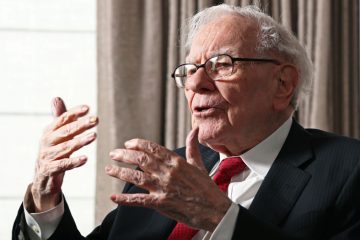Why the Stock Market ‘January Effect’ Is No Longer Very Effective

January appears to have less of a pull on the market than it used to.
Stock investors have long looked to January to tell them where the market might be headed for the rest of the year. And for good reason: Over the long haul, the-first-month-of-the-year indicator has seemed to work pretty well. Historically, stocks have tended to rise in January. And in general, when stocks were up at the end of January, eleven months later shares logged a positive year; when January was down, shares ended the year in the red. Only 27% of the time since 1929 have the market and January parted ways, according to data from Standard & Poor’s.
That seems like good news for 2017 (based on a very small sample size). The Dow Jones industrial average rose 119 points on Tuesday, or 0.6%, on the first trading day of 2017. Let the good times roll.
The problem: Recently, the market connection between January and the rest of the year has been pretty lousy. During the past 11 years, stocks as measured by the S&P 500 have fallen six times in January. Yet the market has ended down in only two of those six years.
The divergence was particularly big last year. In 2016, the market had its worst start of the year since 1896, which Reuters, at the time, noted was seven years before the Wright brothers took flight and 12 years before Ford began selling the Model T. (On Tuesday, Ford scrapped plans to move some of its car production to Mexico.) The market ended the first month of last year down just over 5%.
Nonetheless, in part thanks to the Trump Bump, 2016 ended up being a pretty good year for stocks, up 9.5%.
Overall, the last few years have resulted in a lot of false negatives and false positives for the January indicator. And 2016 wasn’t the only year of big divergence. In 2009, for instance, the market dropped more than 8% in the first 31 days of the year. By March, though, the market was rebounding from the financial-crisis slump, and stocks ended that year up nearly 24%.
In 2015, the January indicator worked, but just barely. Stocks fell 3% in January, but ended the year down just 1%. Erase January, and stocks were actually up the other 11 months of that year. Not exactly the bloodbath that January would have predicted.
Even the first order January Effect—that stocks tend to rise in January—hasn’t been bankable lately. Again, of the past 11 years, only five have had up Januarys.
What’s going on?
One answer could have to do with index funds. More and more money has been shifting into passive investing—funds that blindly track an index. Active fund managers typically sell some stocks in December either to lock in positive returns for the year, or to realize losses (for tax purposes), and then go on a buying spree in January. In the past, that in turn may have created momentum for the stock market for the rest of the year (or at least for a few months), as emotion-driven humans reacted to the spree and dove into the stock market, not wanting to miss out. Index investing, in contrast, lacks those behavioral quirks.
Jeff Rubin, the director of research at investment firm Birinyi Associates, believes the January effect has waned because the January trade became too predictable. In order to capture the month’s gains, more investors have been buying stocks in December, leaving fewer left to buy in January. What’s more, the growing degree of market timing around the first 31 days of the year made January’s gains or losses an increasingly poor representation of how people actually thought about stocks or the economy. “The more people who pile into any trade, the less it works,” says Rubin.
Another answer could be that in an era of historically low interest rates, the stock market, except for the disastrous 2008, has generally been up. Yes, Januarys in which the stock market has risen have been good predictors—five out of the past five have coincided with up years. But, as a post on stock blog Seeking Alpha points out, that’s because the market has gone up in nine of the past 11 years.
There are a number of better-than-average reasons to doubt the predictive powers of this January’s results, if stocks do finish the month with gains. The biggest is President-elect Donald Trump: Actions he may take to stymie global trade, for example, could hobble stocks. Add to that the fact that the Federal Reserve has indicated that it plans more interest rate increases this year. What’s more, as my colleague Shawn Tully writes this week, it looks likely that Wall Street’s big bet on soaring earnings could be a fantasy.
So stocks could continue to rise in January, even past Dow 20,000, as investors remain on a Trump high. But don’t let that fool you. January’s ability to predict the stock market’s future is weaker than ever.









